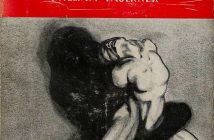First created in 2003 for the Northern Ballet by David Nixon OBE and Patricia Doyle A Midsummer Night’s Dream has since become one of their most popular productions, earning an Olivier nomination its first year of production. An original perhaps for the company for a production to be based around one of Shakespeare’s comedies rather than the usual tragedies such as Wuthering Heights or Swan Lake. The production came to the Mayflower with an audience full of expectation for a spectacular performance. They were granted one.
Set in the 1940s the premise is that of a touring ballet company on its way to Edinburgh, allowing for the use of a sleeper train and hierarchy within the company. Act one opens with the dancers practising Romeo & Juliet and we witness the principal dancer Hippolyta/Queen Titania (Martha Leebolt) being asked to retire by her beau and artistic director Theseus/King Oberon (Tobias Batley). Act one is beautiful in its simplicity yet provides perfect spectacle in a black & white setting. In keeping with Shakespeare’s original the complicated webs of love are set up early with the humour being centred on a clingy Helena (Michela Paolacci) and aloof Demetrius (Giuliano Contadini). The set is incredibly intelligent, transforming easily from that of a rehearsal space to a train station and then to a sleeper train, all by separating out its pieces, but throughout the focus on the dancers is impossible to ignore with lead transitioning from dancer to dancer effortlessly with themes and relationships displayed without need for speech. Ultimately though, within the first Act focus is drawn to the key relationship, Hippolyta and Theseus, and their closing dance is heart wrenching as we witness our heroine battle between her two loves, Theseus and ballet, all witnessed by the ballet master Robin Puck (Nicola Gervasi) and the stage carpenter who holds a crush on the principal dancer, Nick Bottom (Darren Goldsmith).
Of course during the trip each of the couples fall out and the slamming of sleeper train doors is echoed throughout. Soon when the train enters a tunnel however, master Puck (Gervasi) takes over and casts his tricks and Theseus (Batley) dreams. The stage alters. Black and white shift to psychedelic colours and status alters, Theseus is now Oberon king of the fairies and Hippolyta is now Titania his queen. Everyone, including the audience feel as if they have entered the dream with innovative costuming helping with the fairies appearing almost as something of the future with wings mixed in with metal body armour. Gervasi proves his true worth in Act two as Puck appearing feather light on his feet and causing humour in every movement prancing around the king allowing Theseus to appear higher but truly proving puppet master.
Soon when the train enters a tunnel however, master Puck (Gervasi) takes over and casts his tricks and Theseus (Batley) dreams. The stage alters. Black and white shift to psychedelic colours and status alters, Theseus is now Oberon king of the fairies and Hippolyta is now Titania his queen. Everyone, including the audience feel as if they have entered the dream with innovative costuming helping with the fairies appearing almost as something of the future with wings mixed in with metal body armour. Gervasi proves his true worth in Act two as Puck appearing feather light on his feet and causing humour in every movement prancing around the king allowing Theseus to appear higher but truly proving puppet master.
Oberon, intent on punishing his queen, orders Puck to find a magical juice that will make her fall in love with the first creature she sees and so causes her to sleep. Puck, discovering that Nick Bottom rehearsing Romeo & Juliet with the rest of the crew and playing Romeo, turns him into a donkey and leads him to the sleeping queen away from a very camp wardrobe master who has taken on drag in order to play Juliet. I must mention now for viewers that the Wardrobe master (Sebastian Loe) represents a constant source of hilarity sashaying about, refusing to do any lifting and even dancing on stage in white-fronts. The spell works and a wonder of choreography ensues with the light footed Titania chasing the sturdy, clumsy donkey around the stage in order to eventually take him back to her nest. The wonder that is David Nixon’s chorepgraphy prevails again later when Lysander (Isaac Lee-Baker) and Demetrius ( Contadini) fall for Helena (Paolacci) and both reject there previous infatuation Hermia (Dreda Blow). The set here is vital as the couples switching from partner to partner use suspended beds in order to show the changing relationships and also the presence in the dream when not on stage.
The set here is vital as the couples switching from partner to partner use suspended beds in order to show the changing relationships and also the presence in the dream when not on stage.
A combination of traditional ballet and modern is incorporated in order to elevate the level of choreography for the two couples here when we see the men take over and attempt to capture Helena’s (Paolacci) heart trying to stay attached to her at every point. Quite a feat for two men to stay attached to one woman at all times. Eventually however Oberon (Batley) attempts to woo his queen back after jealousy has consumed him with an equally enrapturing dance as the first of Hippolyta and Theseus. Leebolt and Batley as leads are completely believable as this couple and capture attention as soon as their presence is on stage. They are able to manoeuvre the wonder that is the eye centre piece of the stage and translate an array of emotions across without any dialogue. All of this is set to a beautifully harmonious symphony directed by John Pryce Jones. The music, compiled of largely Mendelssohn and Brahm, rises and falls perfectly keeping the audience engaged and impassioned throughout the 2 and half hours.
Of course Puck (Gervasi) and Oberon (Batley) eventually release all from their spells and the couples reconcile, with Helena and Demetrius forming a new bond. Arriving at their destination the next morning all the couples revel in their new found happiness and Theseus (Batley) even relents and reunites Hippolyta (Leebolt) with her pointe shoes. The play ends with the company performing Romeo & Juliet danced by Hermia (Blow) and Demetrius (Giullaino). The company celebrate their success and Theseus (Batley) proposes to Hippolyta (Leebolt) only to find that the other two couples have also got engaged as well.  The company holds a backstage party where all dance merrily and even Nick Bottom (Goldsmith) shares a dance with his crush, and Puck (Gervasi) gathers up the remains of the dream and delivers as homage to Shakespeare his final lines in the original play.
The company holds a backstage party where all dance merrily and even Nick Bottom (Goldsmith) shares a dance with his crush, and Puck (Gervasi) gathers up the remains of the dream and delivers as homage to Shakespeare his final lines in the original play.
David Nixon and Patricia Doyle have adapted a comedy into ballet perfectly, mixing genres and time periods, allowing both stage and costume to experiment with the mythical and futuristic along with the post-war restricted 1940s. The choreography is sublime and was performed perfectly without a hitch inspiring, every audience member to imagine that they too could flit across the stage and perform feats of strength in lifts as well. The effortlessness appearance of the productions progress from scene to scene is a true testimony to the high level of both cast and crew. Not only did the production entrance myself, a fanatic of the ballet, but it also managed to entertain other audience members who were perhaps were simply there to accompany partners. A Midsummers Night’s Dream is truly an example of exemplary ballet but also a true testament to all of David Nixon’s expertise and experience as choreographer, costume designer and Director.
9.5/10 – An exemplary performance from all surrounded by a wondrous accompaniment of music all encapsulated in 1940’s drama and futuristic dreams. Don’t miss your chance to see this production while it is still touring!



